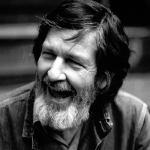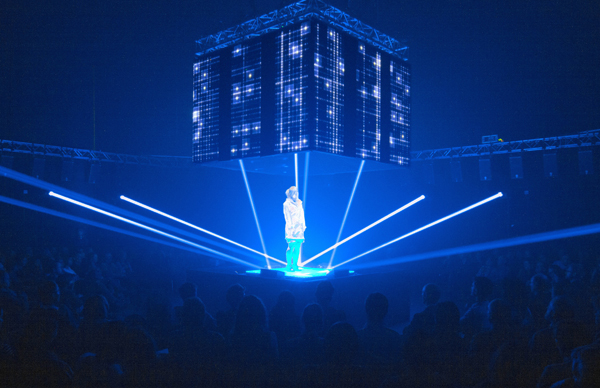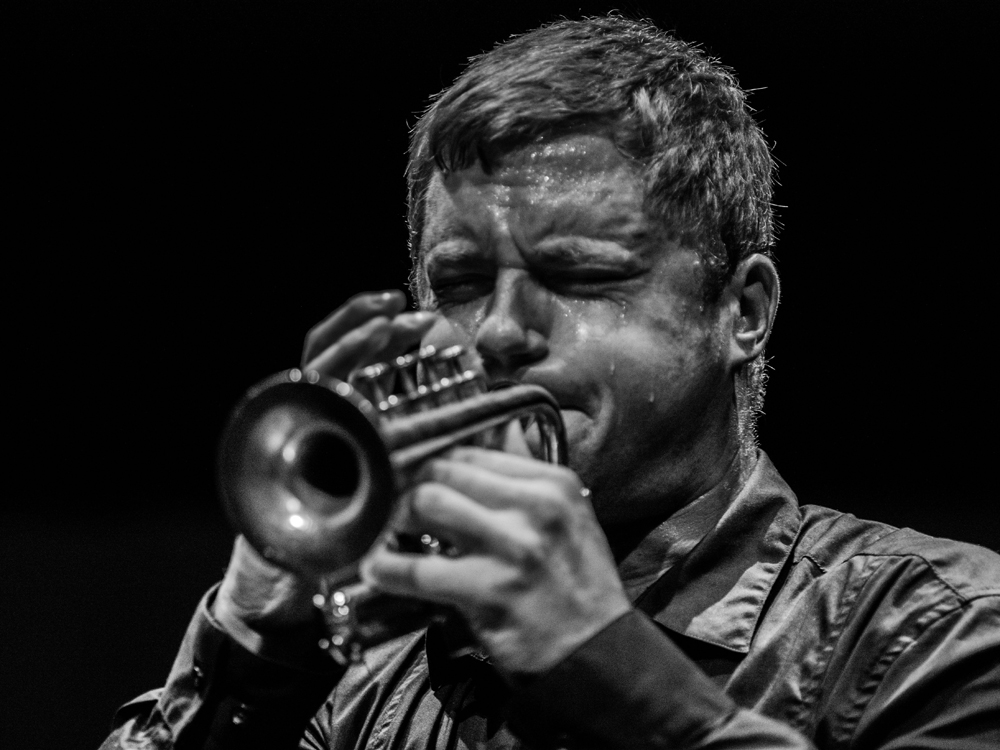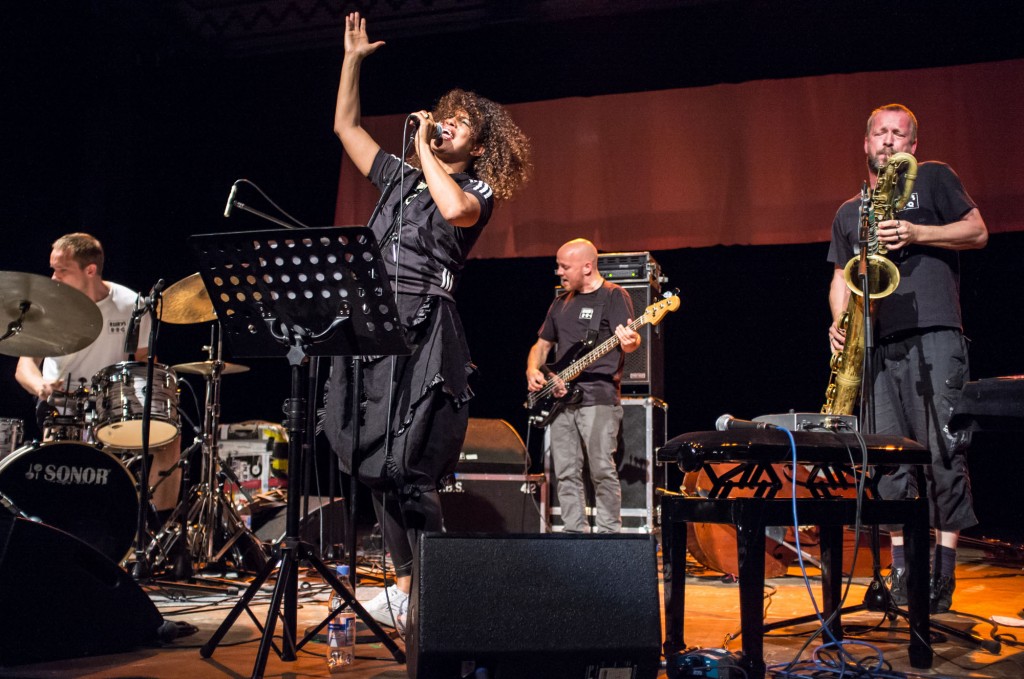By Rebecca Schmid
 Blame it on Cage. Or the Marshall Plan. It is impossible to escape the American canon as the season opens here with the Musikfest Berlin (August 31-September 18), an annual festival dedicated to 20th-century music. The event falls just as Europe’s major festivals are drawing to a close and often struggles for a coherent dramaturgical arc. This year though, the theme is almost too linear. With Porgy and Bess, Moses and Aron, and a new production of Apartmenthouse 1776 on the program, it is hard to ignore the adage Berlin strives to be the next New York. Program notes by Artistic Directors Thomas Oberender and Winrich Hopp even point out that the presidential elections are coming up this year, although one can assume that John Adams would have come to conduct Nixon in China with the BBC Singers and Symphony Orchestra under any other circumstances. Robert Wilson also made a cameo appearance at the Akademie der Künste reading Cage’s Lecture on Nothing; it’s a shame that the event seems so anticlimactic given that the academy began celebrating Cage’s centennial an entire year in advance, exploring his legacy in every possible interdisciplinary form known to man.
Blame it on Cage. Or the Marshall Plan. It is impossible to escape the American canon as the season opens here with the Musikfest Berlin (August 31-September 18), an annual festival dedicated to 20th-century music. The event falls just as Europe’s major festivals are drawing to a close and often struggles for a coherent dramaturgical arc. This year though, the theme is almost too linear. With Porgy and Bess, Moses and Aron, and a new production of Apartmenthouse 1776 on the program, it is hard to ignore the adage Berlin strives to be the next New York. Program notes by Artistic Directors Thomas Oberender and Winrich Hopp even point out that the presidential elections are coming up this year, although one can assume that John Adams would have come to conduct Nixon in China with the BBC Singers and Symphony Orchestra under any other circumstances. Robert Wilson also made a cameo appearance at the Akademie der Künste reading Cage’s Lecture on Nothing; it’s a shame that the event seems so anticlimactic given that the academy began celebrating Cage’s centennial an entire year in advance, exploring his legacy in every possible interdisciplinary form known to man.
It nevertheless must be said that the festival boasts an impressive line-up, with talks by Gerard Mortier and Nuria Schönberg around her late father’s biblical opera and ensembles ranging from the London Symphony Orchestra and the Mahler Chamber Orchestra to the city’s well-groomed local crop. Charles Ives, arguably the U.S.’s most underappreciated composer both at home and broad, has no less than nine works performed, including new orchestral versions of a selection form his 114 Songs penned by John Adams, Toshio Hosokawa, and Georg-Friedrich Haas. At the Philharmonie, Ingo Metzmacher led the Berlin Philharmonic in an all-American program featuring Pierre Laurent-Aimard in a new edition of Ives’ Fourth Symphony. The score completed by Thomas Broadhead hopes to have made the composer´s intentions more clear not only through more legible notation but also a precise outline of the issues a conductor must consider as he develops an interpretation. Metzmacher opted to conduct the symphony without assistants, as it was conceived, relying on the chamber-like communication skills of the Philharmonic while enlisting star oboist Albrecht Mayer to briefly lead the brass and percussion at the start of the second movement.
The symphony, despite its structural complexity, forges a clear path toward spiritual transcendentalism, interweaving church hymns and patriotic marches with Mahlerian obstinacy into a sprawling, multi-dimensional score. Metzmacher and the orchestra held together the music’s overlapping textures with admirable precision and care for balance in timbres ranging from glassy strings to brooding brass. The distant choir ensemble of five violins and harp performed offstage from an unearthly realm, while Aimard’s introspective but animated playing trapped the piano in memory in the dream-like collage of the second movement. The strings of the Philharmonic, led by Daniel Stabwara as concert master, brought smooth expressivity to the rich, neo-Romantic phrases of the fugal third movement, while the chorus (Ernst Senff Chor Berlin) entered serenely above the profane confusion in the finale.
Latin-inspired music of the mid-twentieth century provided the theme for the rest of the evening with Gershwin’s Cuban Ouverture, Antheil’s Jazz Symphony and, the Symphonic Dances from Bernstein’s West Side Story. The dance rhythms could have used more swing in the Gershwin, but became catchier in the final Animato. Metzmacher brought out opaque dissonances with a strong hand, while wind solos reaffirmed the orchestra’s standards for impeccable elegance. While the “Cool Fugue” of Bernstein´s dances was not quite streetwise enough, the “Somewhere” Adagio was meltingly beautiful. Antheil took a more modernist approach to his repurposing of jazz, particularly in his writing for the piano. The musicians remained on point in a collage-like development reminiscent of Ives, while Metzmacher could have brought more spontaneity to rhythmically playful entrances.
Across town on the Gendarmenmarkt, German violinist Isabelle Faust joined the Konzerthaus Orchestra for Feldman’s Violin and Orchestra conducted by Emilio Pomarico. This final piece of a series of works for soloist and orchestra is also Feldman’s longest orchestral work with a duration of approximately one hour, premiered in 1984 with the Frankfurt Radio Symphony. Faust was well warmed up to the technical subtleties of her part, having recorded the work with the Bavarian Radio Symphony in 2001. She refracted hushed, fragmented melodies and precisely wrought microtonal glissandi against the intricate atmospherics of the orchestra, which responds to the violin’s inquiries with an understated tension that seems to stretch time out into infinity. The Konzerthaus Orchestra retained quiet focus throughout the work, with all the right tuning in place, although the sections are not able to overcome a certain roughness around the edges. A friend who composes in post-Feldman style also called on Pomarico for trying to be expressive with the tempo rather than just beating out time and allowing the music to speak for itself.
Pomarico’s use of rubato proved more amenable to Schubert’s Unfinished Symphony, which he opened the program in dedication to the recently deceased composer Emmanuel Nunes, but the tempo slowed down too much toward the end of the opening Allegro, and the Andante lacked the steady pace that feels like a slow march into heaven. Technical blemishes unfortunately also detracted from the performance’s Gestalt. The strings entered with fiery attacks but were sometimes marred by a husky sound which cannot quite do justice to Schubert’s soulful phrases. Still, as the understated beauty of the Andante floated in time, one felt an unusual sense of historical continuity.
As Feldman admitted at a seminar in Germany in 1972, “there’s an aspect of my attitude about being a composer that is like mourning…something that has to do with, say, Schubert leaving me.” Feldman later disclosed that he didn’t like to discuss the issue publicly, perhaps because of his determination to overcome the overwhelming presence of 19th-century German tradition, which was to some extent inextricably linked for the composer to the horrors of the Holocaust. That his later works managed to preserve a certain amount of sentimentality as they turned their back on western convention only speaks to the lasting power of the New York School which, ironically, is worshipped with an unparalleled fervor in Germany.
Musikfest Berlin, through September 18.


